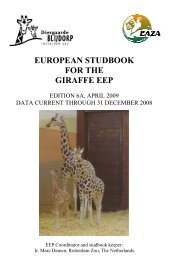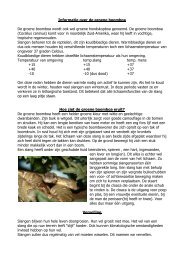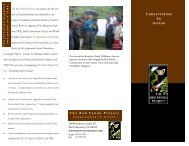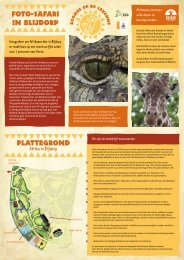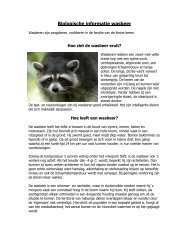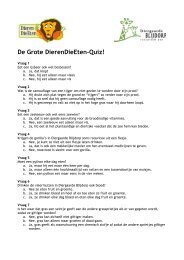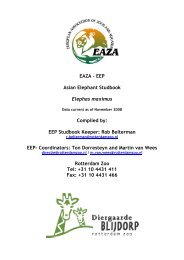You also want an ePaper? Increase the reach of your titles
YUMPU automatically turns print PDFs into web optimized ePapers that Google loves.
<strong>EEP</strong> STUDBOOK CROWNED PIGEONS<br />
Comparison between crowned <strong>pigeon</strong> food in the wild and in captivity<br />
Crude protein<br />
Crude fat<br />
Crude fibre<br />
Crude ash<br />
Phosphorus<br />
Calcium<br />
Zoo-diet<br />
(g/kg DM)<br />
n = 5 institutions<br />
150 ± 38<br />
110 ± 16<br />
110 ± 21<br />
120 ± 30<br />
20 ± 8<br />
40 ± 17<br />
Wild-diet *1<br />
(g/kg DM)<br />
n = 4 <strong>pigeon</strong>s<br />
96 ± 12<br />
102 ± 24<br />
449 ± 73<br />
No data<br />
11 ± 2<br />
29 ± 7<br />
91<br />
Turkey-diet<br />
(g/kg DM)<br />
*1 Values from samples taken from the crop (not in the stomach), because the contents of the stomach are<br />
already more digested than the food parts in the crop.<br />
*2 (National Research Institute, 1984; The National Research Council, 1984)<br />
NRC advices 13.5 MJ OE/kg DM for turkeys. Because of their size and ecology, the data for turkeys are often<br />
used as a guideline for crowned <strong>pigeon</strong>s (National Research Institute, 1984).<br />
Results<br />
There are some remarkable differences between the nutrition of crowned <strong>pigeon</strong>s in the wild<br />
and in the five zoos with good reproductive results. The percentage of crude protein is much<br />
lower in the wild, which might be explained by the fact that these samples were collected<br />
shortly after the reproductive season. The same explanation might be applicable to the lower<br />
ratios of calcium and phosphorus in the wild. The ratio Ca/P is higher in the wild than in<br />
captivity. In zoos and bird parks, most crowned <strong>pigeon</strong>s are able to produce eggs throughout<br />
the year (Hallebeek, 1995), while the samples in the wild were collected about three or four<br />
months after egg production. The most remarkable difference is the ratio of crude fibre, which<br />
is four times as high in the wild as in captivity. The food, collected from the crop and stomach<br />
of crowned <strong>pigeon</strong>s in the wild, contains a lot of large seeds, while the food of crowned<br />
<strong>pigeon</strong>s in captivity usually comprises of smaller food parts. The largest pieces they get in<br />
captivity are pies and parts of fruits, while in the wild they are swallowing whole beans<br />
(which are rich in fibre) up to 6 cm long. The large stones they swallow in the wild might<br />
assist to digest the large food parts faster (Vogel, 1984).<br />
(*2)<br />
134<br />
32<br />
47<br />
95<br />
2.7<br />
5.4



